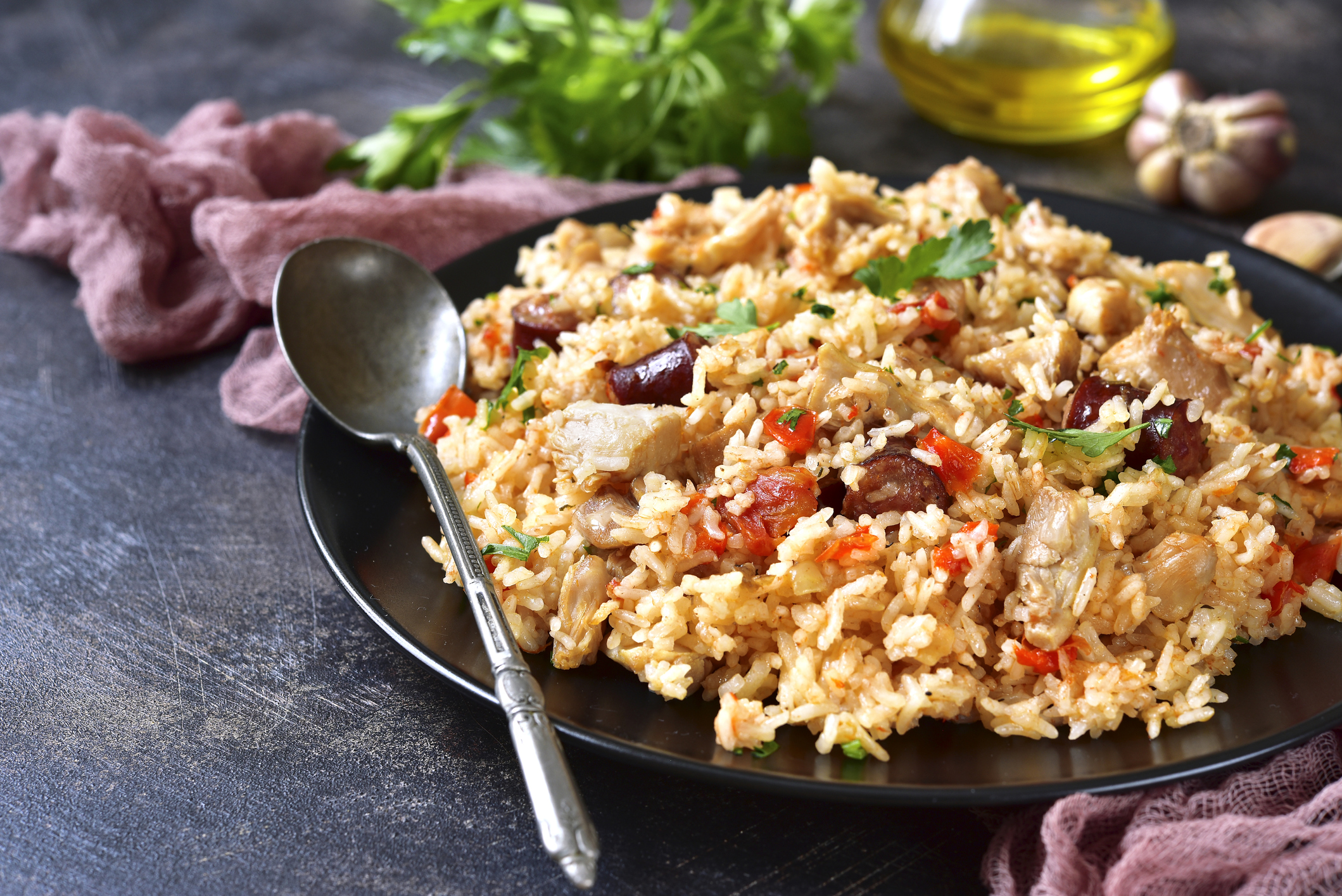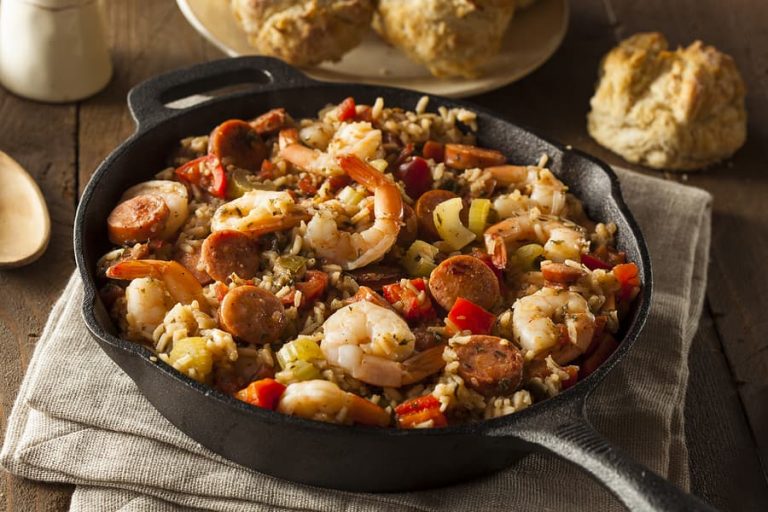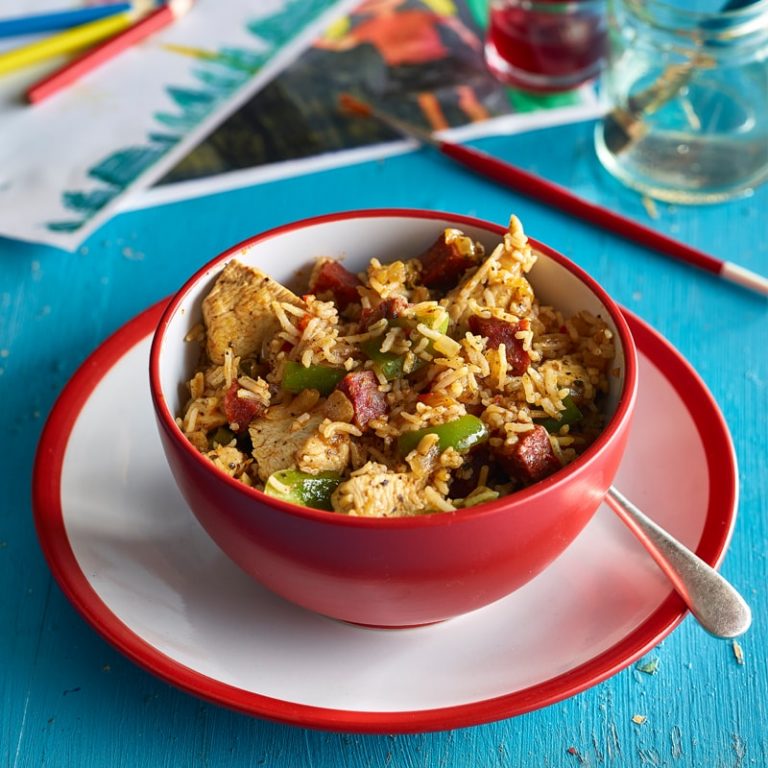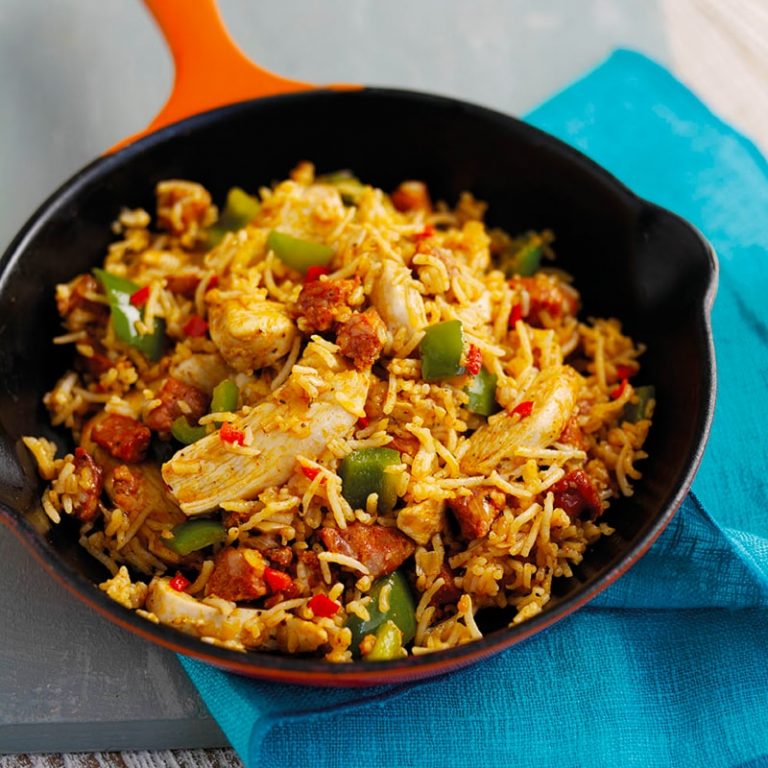
What is Jambalaya and Where Did it Come From?
Jambalaya has been a much-loved favourite for generations as it is cheap, filling and full of flavour, but where did it come from?
June 17th, 2021
Jambalaya is a dish popular in the South East United States, most notably Louisiana. The staple ingredients are:
Rice
Meat
Vegetables
Though each region has slightly different variations. The dish can include a vast range of meats and seafood such as:
Turkey
Boar
Shrimp
Venison
Alligator (yes alligator!)
Oysters
Duck
Crawfish
Although the most common are chicken and smoked sausage.
Jambalaya has been a much-loved favourite for generations as it is cheap, filling and full of flavour. It is also very versatile, so it can be easily adapted to make use of whatever ingredients happen to be lying around.

Creole vs Cajun
Although there are many variations in cooking Jambalaya there are two main methods:
Creole – first cooked in and around New Orleans
Creole jambalaya is made using tomatoes. The ‘holy trinity’ of onions, peppers and celery are cooked with the meat, then the tomatoes, stock and rice are added. Everything is brought to the boil before being covered and left to simmer until all the stock has been absorbed by the rice. The dish is left with a red hue because of the tomatoes, and this is why Creole jambalaya is sometimes called ‘red jambalaya’.
Cajun – first cooked in the rural parts of Louisiana
Cajun jambalaya does not use tomatoes. In this recipe the meat is cooked first on its own until it caramelises, then the trinity of vegetables is added and once cooked, the stock and rice are put in. Cajun jambalaya usually has a brown colour due to the meat dissolving in the broth. It also has a smokier flavour because of the meat being allowed to brown first.

What does ‘Jambalaya’ Mean?
The origins of the word jambalaya are uncertain to say the least; although there are many theories none have proved verifiable. One common theory is that the French word ‘Jambon’, meaning ham, was mixed with the African word ‘Aya’ meaning rice; there were many slaves in Louisiana at the time the dish is thought to originate from.
Another interesting theory is based on an old story of a traveller who was staying in an old guest house in Louisiana and one night asked its cook, named Jean, to “sweep something together” in French. The resulting phrase – “Jean, balayez!” eventually became ‘jambalaya’.
Another argument for the origin, put forward by Andrew Sigal, is that the word ‘jambalaya’ is based on the Provençal word ‘jambalaia’, which seems to have first appeared in a French-Provençal dictionary from 1878. The definition described it as being a mishmash or rabble – much like the dish itself.
The Native American Atakapa tribe claim the word originates from the phrase “Sham, pal ha! Ya!” meaning “Be full, not skinny! Eat Up!” their equivalent of the French “Bon appétit!” which came to be pronounced ‘jambalaya’ due to Spanish influence.
The History of Jambalaya
Although the exact origins of the dish are not known for sure, the most commonly held belief is that it was the result of a variety of ethnicities mixing in the port of New Orleans.
Stanley Dry noted that the earliest known recipes were found in two cookbooks from the city published in 1885. Unfortunately, it was not common for cooks to add a place and date to recipes during this era, so it is impossible to know if any pre-dated these recipes.
Jambalaya has influences of Spanish, French, African, Native American and Caribbean cooking styles and produce. Perhaps the most obvious of these is Spanish, due to the dish’s similarity to paella, which was brought to New Orleans by foreign explorers. In the case of Creole jambalaya, tomatoes may have been added by Spanish cooks as a substitute for saffron which is used in paella. The French probably added spices brought from the Caribbean while Cajun cooks used meat caught in the bayous.

Jambalaya was created as a result of the need for filling but inexpensive meals with easily available ingredients, as was the case for most dishes originating from this period. It first became popular at church fairs; these were the biggest public gatherings at the time, and the dish is perfect for these types of occasions as it can be cooked in one large pot over a hardwood fire. It’s economical preparation method resulted in it soon being a staple part of other gatherings such as weddings, political rallies and family get-togethers.
The dish saw a surge in popularity during the 1930s due to the economic downturn; many people could barely afford to eat and so the simple recipe of vegetables and rice was a filling choice. Until recently, cooking in Louisiana was mainly restricted to the local area, resulting in such a breadth of variations of the dish. Each family will have their own recipe for jambalaya that has been proudly passed down through each generation, with very little adaptation.
Today, the dish is still a firm favourite in Louisiana and remains a big part of social gatherings. There is even a Jambalaya festival held in Gonzales; a city that was proclaimed ‘Jambalaya capital of the world’ by the governor of Louisiana in 1968. Cooks from across the region take part in the annual contest in order to win prizes for the dish they have spent years perfecting.
Cheap, tasty and filling jambalaya has been created based on the many cultures that have influenced the local region and is a testament to its creators’ ingenuity and practicality. Jambalaya is a unique and uniting dish that is likely to be enjoyed by generations to come.
